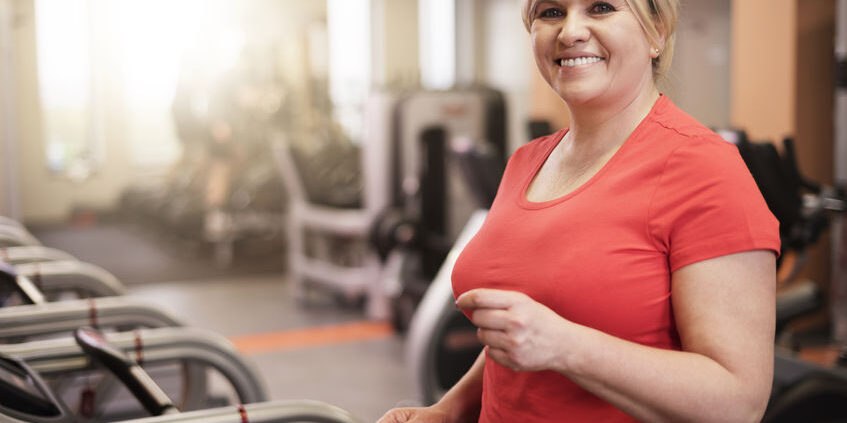When it comes to fat, it’s location, location, location
 Not all fat is created equal.
Not all fat is created equal.
That’s because the location of your body fat may determine how much of a role it plays in boosting your risk for health problems.
Subcutaneous fat, or the fat on your arms, legs and hips, is fairly benign. But visceral fat, or the kind that extends in your abdomen and surrounds your organs, can pose problems.
Why? Because belly fat has been linked to an increased risk of heart disease, high blood pressure, stroke, cancer, diabetes and a host of other conditions, according to research. And sorry guys, belly fat tends to be a bigger problem for you than women.
Researchers are investigating why belly fat causes such a problem. But for the everyday person, it is important to know where to start and how much belly fat you might have.
So how do you tell if belly fat is getting the best of you? Measure your waist. While waist circumference alone cannot diagnose the body fatness or overall health of an individual, it is a valuable screening tool according to the CDC. In general, for women, 32 inches or less is healthy; 33-34 inches is overweight; 35 inches or more is obese. For men, 37 inches or less is healthy; 38-39 inches is overweight; 40 inches or more is obese.
If you want to improve your health and get rid of that waistline fat, there are a few things you can do. Exercise is one of the most important things you can do to reduce abdominal fat. Try to get at least 30 minutes of moderate exercise every day. This could include walking, biking, swimming or any other activity that gets your heart rate up and makes you sweat.
In addition to exercise, diet is also important when trying to lose abdominal fat. Eating fewer calories than you burn will help create a calorie deficit, which will force your body to start burning stored fat for energy. Try to focus on eating whole, unprocessed foods like fruits, vegetables, lean protein and healthy fats. Avoid sugary drinks, processed foods, and excessive amounts of alcohol.
If you want to lose abdominal fat quickly, you may need to temporarily increase the intensity of your exercise and/or diet. However, make sure not to overdo it – too much exercise or too drastic of a calorie deficit can lead to problems like muscle loss or metabolic slowdown. Once you’ve reached your goal weight, you can then focus on maintaining it through a healthy lifestyle.
Ready to shed some belly fat? Nutrition, fluids and exercise can help jump start the waistline revolution. Pick one place to start, such as exercise and begin making it a habit. Studies indicate that regular exercise — even just brisk walking for 30 to 45 minutes a day — can make a significant dent in the circumference of your waist. If you need some guidance, feel free to give us a call.



 Your home should be your sanctuary, a place where you can leave the day’s problems and stressors at the door. How does your home make you feel? If it’s anything less than calm, collected and serene, you might have a project on your hands.
Your home should be your sanctuary, a place where you can leave the day’s problems and stressors at the door. How does your home make you feel? If it’s anything less than calm, collected and serene, you might have a project on your hands.
 Inflammation can be highly uncomfortable, and sometimes downright painful, but the presence of inflammation isn’t always a bad thing. Inflammation is a natural response to an infection or injury. It is a part of the body’s healing system and so occurs when there is injury or illness to combat.
Inflammation can be highly uncomfortable, and sometimes downright painful, but the presence of inflammation isn’t always a bad thing. Inflammation is a natural response to an infection or injury. It is a part of the body’s healing system and so occurs when there is injury or illness to combat.
 While most people know that a steady of potato chips and running on four hours of sleep a night consistently are unsustainable habits, many other sneaky bad habits can also creep into our routines and wreck havoc on our bodies.
While most people know that a steady of potato chips and running on four hours of sleep a night consistently are unsustainable habits, many other sneaky bad habits can also creep into our routines and wreck havoc on our bodies.
 Have you heard of the Scientific 7-Minute Workout? It is a
Have you heard of the Scientific 7-Minute Workout? It is a 
 Hormones are the chemical messengers of your body. They travel through your bloodstream, instructing different organs and tissues on what to do. From reproduction to metabolism regulation, your hormones control all of your body’s major processes.
Hormones are the chemical messengers of your body. They travel through your bloodstream, instructing different organs and tissues on what to do. From reproduction to metabolism regulation, your hormones control all of your body’s major processes.


 Do you enjoy a cup of joe every morning? Who doesn’t, right? Turns out caffeine is more than an elixir of energy found in most American households. There are many health benefits to caffeine that go beyond waking you up. Here’s a look at a few of them, according to experts and the findings of research:
Do you enjoy a cup of joe every morning? Who doesn’t, right? Turns out caffeine is more than an elixir of energy found in most American households. There are many health benefits to caffeine that go beyond waking you up. Here’s a look at a few of them, according to experts and the findings of research:


 Stress. Just hearing the word might be enough to make your jaw clench up. But stress in and of itself isn’t necessarily a bad thing.
Stress. Just hearing the word might be enough to make your jaw clench up. But stress in and of itself isn’t necessarily a bad thing.